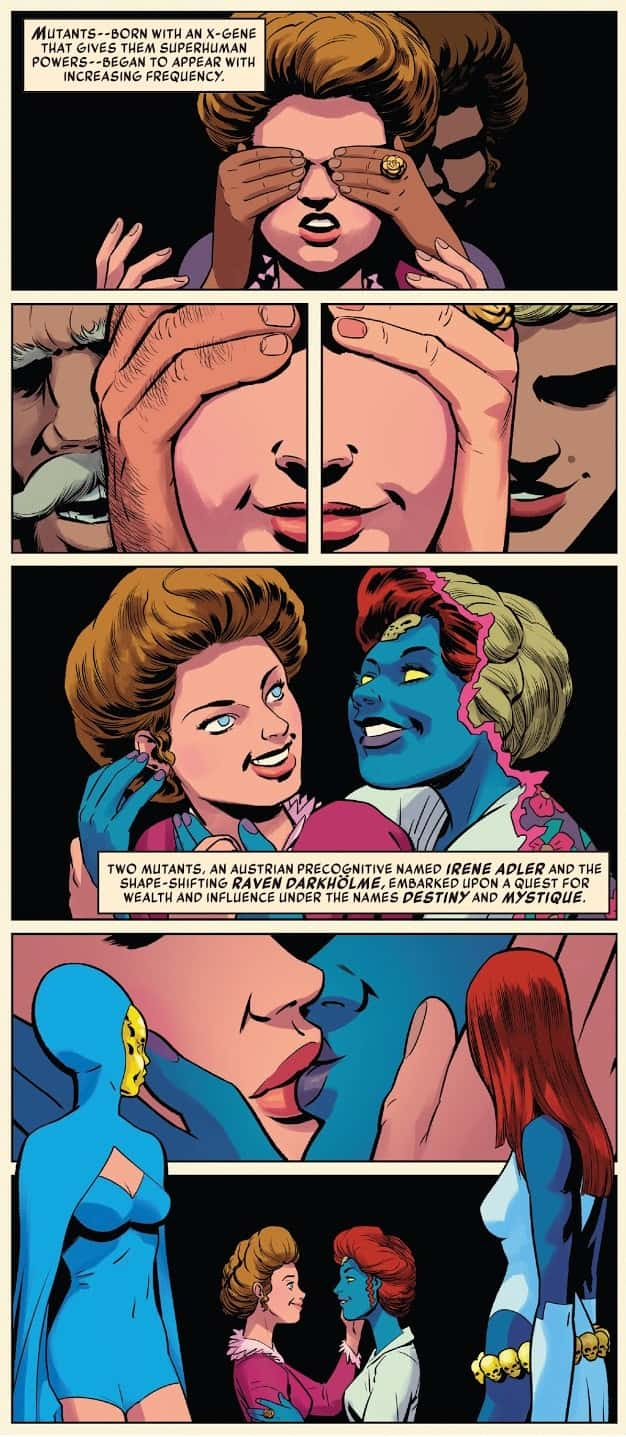Pride Month: How Marvel kept Mystique and Destiny's romantic relationship under the radar for 38 years

The history of LGBTQ+ characters in comics is rife with cover-ups. Characters who were always intended to be a queer couple were not allowed to be officially portrayed as such, despite it being obvious to readers that they were more than just close friends. The most prominent case of this happening is with the story of Mystique and Destiny, who were intended to be in a romantic relationship from the very beginning, and took nearly four decades to have that confirmed.
Making their first appearance together in 'Uncanny X-Men' #141 (1981) as part of the classic 'Days of Future Past' storyline, Mystique and Destiny led a version of the Brotherhood of Evil Mutants. Co-created by Chris Claremont in collaboration with Dave Cockrum for Mystique and John Byrne for Destiny, the pair was always meant to be romantically entangled. However, the Comics Code Authority forbade queer characters from being explicitly shown on the page, which meant that Claremont was forced to do the best he could with subtext.
Mystique and Destiny co-parented Rogue, and, at one point, there was even a plan for Claremont to have Mystique be Nightcrawler's father, with Destiny being his mother, giving a certain gender fluidity to Mystique as well. This was shot down by editorial mandate, and Mystique and Destiny's relationship continued to be relegated to subtext and subtext alone. This happened even though Marvel has shown to be willing to break away from the Comics Code Authority when it suited them, as it most famously did for three issues of 'The Amazing Spider-Man,' which depicted narcotics on the page.
In the years since, Marvel has opened the door to much wider queer representation, though it was still loathe to go back on its own canon, and admit its mistakes, meaning that despite the proliferance of new queer relationships, Marvel's oldest LGBTQ+ couple remained Marvel's worst kept secret until as recently as 2019. Part of this remained easy simply because Destiny's death in 'The Muir Island Saga' was one of the few mutant deaths that actually stuck. In 'The Secret History of the Marvel Universe,' the relationship between Mystique and Destiny was finally made canon, with an unmistakable onscreen kiss featured prominently. Not long after that, 'X-Men' #6 saw Mystique refer to Destiny as her wife, as well as expressing an outrage shared by many fans that Destiny has not yet been brought back to life.

The road from subtext to text took far too long, but it has finally happened. Though Mystique is most certainly one of Marvel's most unapologetic villains, the relationship between her and Destiny is one that has incredible importance to her fans and members of the queer community. Though the relationship has been confirmed canon, and the door to resurrection being thrown open wider than it ever has been before, the chance to see Mystique and Destiny as a couple in anything but flashbacks is still a while away. Marvel has a lot of time to make up for, in its censoring of queer relationships between its characters, and resurrecting Destiny would be a great place to start.